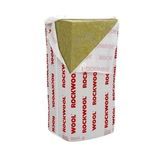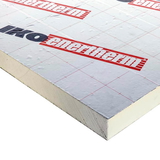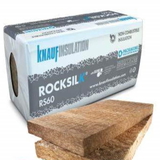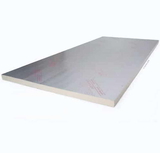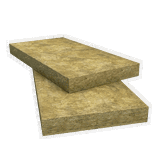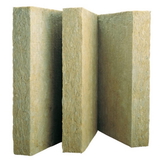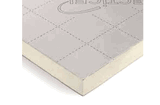- Blogs
- PIR vs Mineral Wool: Which Insulation is Better for Your Project?
PIR vs Mineral Wool: Which Insulation is Better for Your Project?
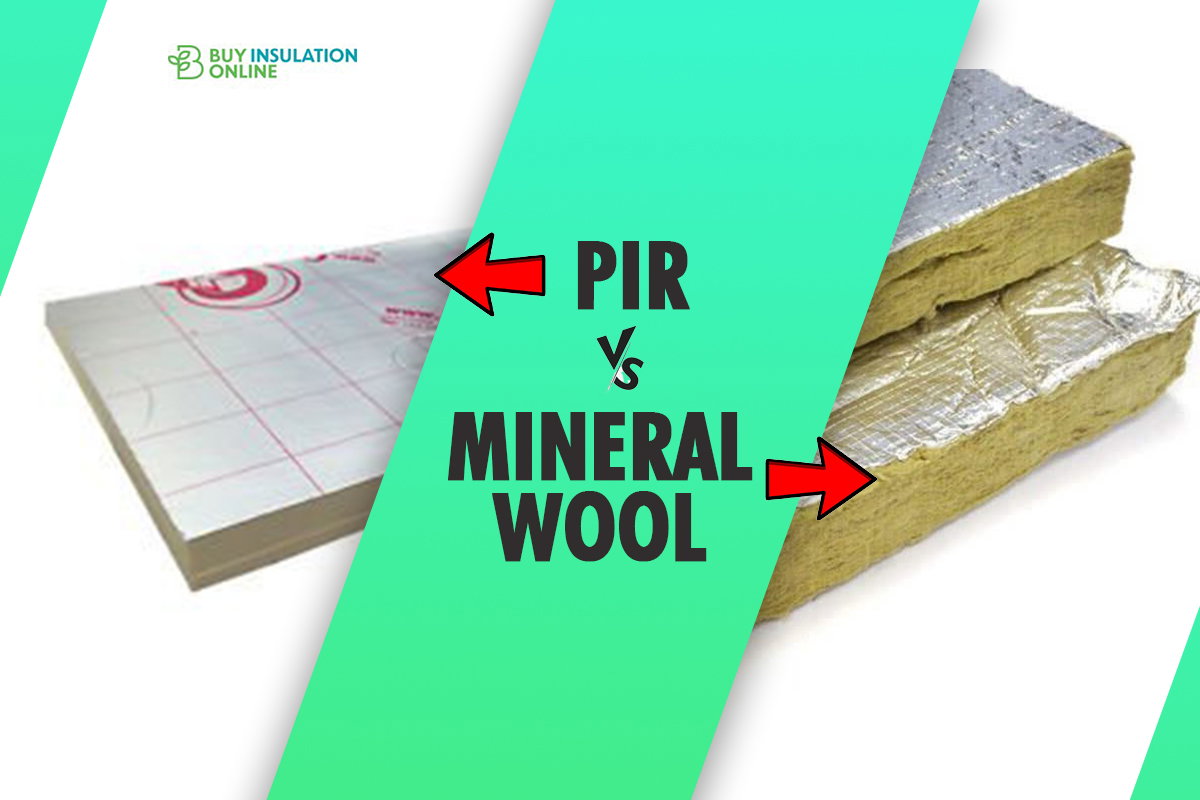
If you are planning to insulate your home or building, you might be wondering which type of insulation is best for your needs. There are many factors to consider when choosing insulation, such as thermal performance, fire resistance, moisture resistance, sound absorption, environmental impact, and cost. Two popular options that often take the spotlight are PIR (Polyisocyanurate) and Mineral Wool insulation.
In this article, we will compare two common types of insulation: polyisocyanurate (PIR) and mineral wool. We will look at their advantages and disadvantages, and help you decide which one is more suitable for your project.
Understanding PIR Insulation
What is PIR Insulation?
PIR, short for Polyisocyanurate insulation, is a rigid foam board insulation known for its exceptional thermal performance meaning it can prevent heat loss or gain effectively. It's created through a chemical reaction between isocyanurate and polyol resin, resulting in a foam board with outstanding insulating properties.
PIR insulation typically has an R-value of 5 to 6 per inch, which is higher than most other types of insulation. PIR insulation also has a low water vapour permeability, meaning it can resist moisture and mould growth. PIR insulation is often used as continuous insulation on exterior walls, roofs, and floors.
Advantages of PIR Insulation
- High Thermal Resistance: PIR insulation boasts a high R-value, indicating its ability to resist heat flow. This makes it effective at keeping your space comfortable year-round.
- Low Thermal Conductivity: With low thermal conductivity, PIR insulation excels at preventing heat transfer, contributing to energy efficiency.
- Lightweight and Easy to Install: Its lightweight nature makes PIR easy to handle and install, allowing for flexibility in various spaces.
- Resistance to Moisture: PIR is resistant to moisture, making it suitable for humid environments.
Limitations of PIR Insulation
- Cost Considerations: PIR insulation tends to be pricier upfront, but its long-term energy-saving benefits can offset the initial expense.
- Environmental Concerns: The production of PIR insulation involves certain chemicals that have raised environmental concerns. Efforts are underway to make it more eco-friendly.
Exploring Mineral Wool Insulation
What is Mineral Wool Insulation?
Mineral wool insulation is a type of fibrous insulation that is made from molten minerals or rocks, such as basalt or slag. Mineral wool insulation has a moderate thermal performance, meaning it can reduce heat loss or gain moderately.
Mineral wool insulation typically has an R-value of 3.7 to 4.3 per inch, which is lower than PIR insulation but higher than some other types of insulation. Mineral wool insulation also has a high sound absorption, meaning it can reduce noise transmission and improve acoustics.
Mineral wool insulation is often used as batts or boards in interior walls, ceilings, floors, and fire stops.
Advantages of Mineral Wool Insulation
- Fire Resistance: Mineral wool insulation is highly fire-resistant and can endure high temperatures without combusting.
- Sound Insulation Properties: It excels in dampening sound, creating a quieter indoor environment.
- Sustainability and Eco-Friendliness: Often made from recycled materials, Mineral Wool is recyclable itself, making it an environmentally friendly choice.
Limitations of Mineral Wool Insulation
- Lower R-Value: Compared to PIR, Mineral Wool typically offers lower thermal resistance.
- Weight and Handling Challenges: Mineral wool insulation can be heavier and more challenging to handle during installation.
Exploring PIR Insulation and Mineral Wool Insulation Products
Here are some examples of PIR (Polyisocyanurate) Insulation Products and Mineral Wool Insulation Products, two commonly used materials for enhancing the energy efficiency and comfort of buildings. These products play a crucial role in insulating walls, floors, and roofs, but they offer distinct features and benefits.
In this comparison, we'll explore specific products from each category, highlighting their key features, applications, and environmental considerations to help you make informed choices for your insulation needs.
Mineral Wool Insulation Products
Knauf Rocksilk RS60 - Rock Mineral Wool Acoustic and Thermal Insulation Slab
![Knauf Rocksilk RS60 - Rock Mineral Wool Acoustic and Thermal Insulation Slab]()
- Made of rock mineral wool, non-combustible with an A1 Euroclass fire rating.
- Excellent thermal and acoustic insulation for various applications.
- Lightweight, durable, and easy to install.
- Manufactured using ECOSE® technology for environmental friendliness.
Other than Knauf Rocksilk RS60 we also have Knauf RS45 Insulation - Mineral Wool Acoustic And Thermal Insulation, Both are versatile insulation products suitable for various applications with similar thermal conductivity, fire ratings, environmental technology, and handling characteristics. The primary differences between Knauf RS45 and Knauf Rocksilk RS60 is their available thicknesses and pack coverages, making them suitable for different project requirements.
Rockwool RWA45 Mineral Wool Thermal And Acoustic Insulation Slab
-
- Offers both thermal and acoustic insulation, non-combustible with an A1 Euroclass fire rating.
- Versatile applications for walls, roofs, and more.
- Long-lasting, durable, and resistant to moisture and mould.
- Excellent soundproofing properties.
- Made with rock mineral wool and has a 7-layer aluminium finish for moisture protection.
Rockwool Full Fill - Cavity Batt Insulation
-
- Semi-rigid insulation for masonry cavity wall construction.
- Suitable for new builds and extensions, lightweight, and easy to install.
- Non-combustible with water-repellent additives.
- Reduces installation time and minimizes condensation.
- Ideal for thermal and acoustic insulation in various applications.
PIR Insulation Products
Celotex GA4000 - High-Performance PIR Insulation Board![Celotex GA4000 - High-Performance PIR Insulation Board]()
-
- High-performance PIR insulation board with a low K-Value.
- Versatile applications for walls, floors, and roofs.
- Provides thermal bridging solutions and reflects heat with foil facings.
- Environmentally friendly, dimensionally stable, and long-lasting.
- Compressive strength of 120kPa, suitable for moderate load-bearing applications.
Other than Celotex GA4000, we also have Celotex TB4000 - High-Performance PIR Insulation Board, which has a more limited thickness 25mm and 40mm and R-Values, Ranges from 1.1 to 1.8 m².K/W.
Iko Enertherm - PIR Insulation Board
-
- PIR insulation board with a low K-value for superior thermal insulation.
- Suitable for loft, wall, roof, and floor insulation.
- Lightweight, easy to install, and environmentally friendly.
- Features a 7-layer ALU lamination finish for moisture protection.
- Dimensionally stable and retains its shape and performance over time.
Xtratherm XT/PR - PIR Rigid Insulation Board - Pack Quantities
-
- PIR insulation boards are ideal for warm roof insulation, walls, and floors.
- Low K-Value and closed-cell structure for excellent thermal performance.
- Lightweight, easy to cut and install.
- Provides a continuous vapour barrier and water resistance.
- Environmentally friendly, dimensionally stable, and rot-proof.
Comparing PIR and Mineral Wool
Thermal Performance: PIR has a superior thermal performance due to its high R-value. It's highly effective at insulating, making it an excellent choice for areas with extreme temperature fluctuations. Mineral Wool, while a good insulator, may not provide the same level of thermal resistance.
Moisture Resistance: Both materials excel in moisture resistance. PIR resists moisture, making it suitable for humid areas. Mineral Wool can absorb moisture without losing its insulating properties, making it a good option for damp environments.
Fire Resistance: Mineral Wool is the leader in fire resistance, capable of withstanding high temperatures without igniting.
Sound Insulation: For noise reduction, Mineral Wool is the preferred choice due to its sound-absorbing properties.
Environmental Considerations: Mineral Wool is often considered the greener choice, as it's made from recycled materials and can be recycled itself. PIR, while effective, raises some environmental concerns due to its production process.
Cost Analysis: PIR insulation is generally more expensive upfront, but its higher R-value can lead to energy savings. Mineral Wool tends to be more budget-friendly initially but may not be as energy-efficient.
Tabular chart comparing PIR (Polyisocyanurate) and Mineral Wool Insulation.

Application Scenarios
- Residential Construction: PIR is popular for homes, especially in areas with extreme temperature variations.
- Commercial Construction: PIR offers energy efficiency, while Mineral Wool excels in fire resistance and sound insulation.
- Industrial Settings: Mineral Wool is often chosen for its exceptional fire resistance.
Choosing the Right Insulation Material
While choosing the right Insulation material you can consider the following:
- Climate and Location: PIR for extreme temperatures, Mineral Wool for moderate climates.
- Building Type and Purpose: PIR for residential, Mineral Wool for fire safety and sound insulation.
- Budget Constraints: PIR for long-term savings, Mineral Wool for initial affordability.
- Environmental Concerns: Mineral Wool for eco-friendliness.
- Consultation with Experts: Seek professional advice to match your specific needs.
- Case Studies and Real-World Examples: Learn from similar projects to make an informed choice.
Installation and Maintenance Tips
Regardless of your choice, ensure proper installation and maintenance:
- Proper Installation Practices: Follow manufacturer guidelines to eliminate gaps.
- Maintenance Guidelines: Regularly inspect for damage and address issues promptly.
Common Issues :
Be aware of common insulation problems such as settling, gaps, or damage, and know how to address them. For PIR insulation, watch out for any shrinkage that might occur over time.
Frequently Asked Questions
Q: What are the differences between PIR, rockwool, and mineral wool insulation?
A: PIR, rockwool, and mineral wool are three different types of insulation materials. PIR (Polyisocyanurate) is a type of rigid foam insulation board, while rockwool and mineral wool are made from natural stone or basalt. They have different thermal properties and applications.
Q: How does rockwool insulation compare to PIR insulation?
A: Rockwool insulation has excellent fire resistance and soundproofing capabilities, making it a popular choice for use in buildings. On the other hand, PIR insulation offers high thermal efficiency and is commonly used in applications where space is limited.
Q: Which type of insulation is better: Rockwool or PIR?
A: The choice between Rockwool and PIR insulation depends on the specific requirements of your project. If fire resistance and soundproofing are important factors, Rockwool may be the better choice. However, if thermal efficiency and space-saving are your primary concerns, PIR insulation might be the better option.
Q: Can Rockwool be used for external wall insulation?
A: Yes, Rockwool insulation can be used for external wall insulation. It provides effective insulation and helps improve the energy efficiency of buildings.
Q: Is polystyrene insulation board the same as PIR board?
A: No, the polystyrene insulation board is different from the PIR board. Polystyrene is a type of insulation material made from expanded polystyrene (EPS). PIR board, on the other hand, is made from polyisocyanurate foam. They have different thermal properties and applications.
Q: What is the best insulation to use for loft insulation?
A: The best insulation for loft insulation depends on various factors, such as the available space and your budget. Popular choices include rockwool insulation, glass mineral wool, and PIR foam insulation.
Q: What is the K-value of PIR insulation?
A: The K-value of PIR insulation can vary depending on the thickness and specific product used. Generally, a 100mm thick PIR board has a K-value of around 0.022 W/mK.
Q: What is the difference between Rockwool and glass wool insulation?
A: Rockwool insulation and glass wool insulation are both types of mineral wool insulation. The main difference is the raw material used. Rockwool is made from natural stone or basalt, while glass wool is made from recycled glass.
Q: Can PIR insulation be used for cavity insulation?
A: Yes, PIR insulation can be used for cavity insulation. PIR products are available in various forms that can be installed in cavities to provide thermal insulation.
Q: What are the advantages of multifoil insulation over other types of insulation?
A: Multifoil insulation offers several advantages over other types of insulation. It is thin and lightweight, making it easier to handle and install. It also provides effective thermal insulation and can help reduce heat loss.
Conclusion
Choosing between PIR (Polyisocyanurate) and mineral wool insulation depends on various factors, including your project's specific requirements, budget constraints, and environmental considerations. Both materials have their advantages and limitations, making the right choice project-dependent.
PIR and mineral wool are commonly used insulation types with distinct characteristics. Your choice may hinge on project-specific factors, but it's crucial to assess the entire building's performance during design and construction.
To ensure optimal performance and efficiency for your home or building, careful assessment and consultation with insulation professionals are essential. Keep in mind that proper installation and maintenance are critical, regardless of the insulation material you select.
So, Consulting with insulation contractors or engineers is advisable to guarantee the selection and installation of the most suitable insulation for your project.

Samuel Hitch
Managing Director
Buy Insulation Online.
Leave A Reply
Your feedback is greatly appreciated, please comment on our content below. Your email address will not be published. Required fields are marked *
